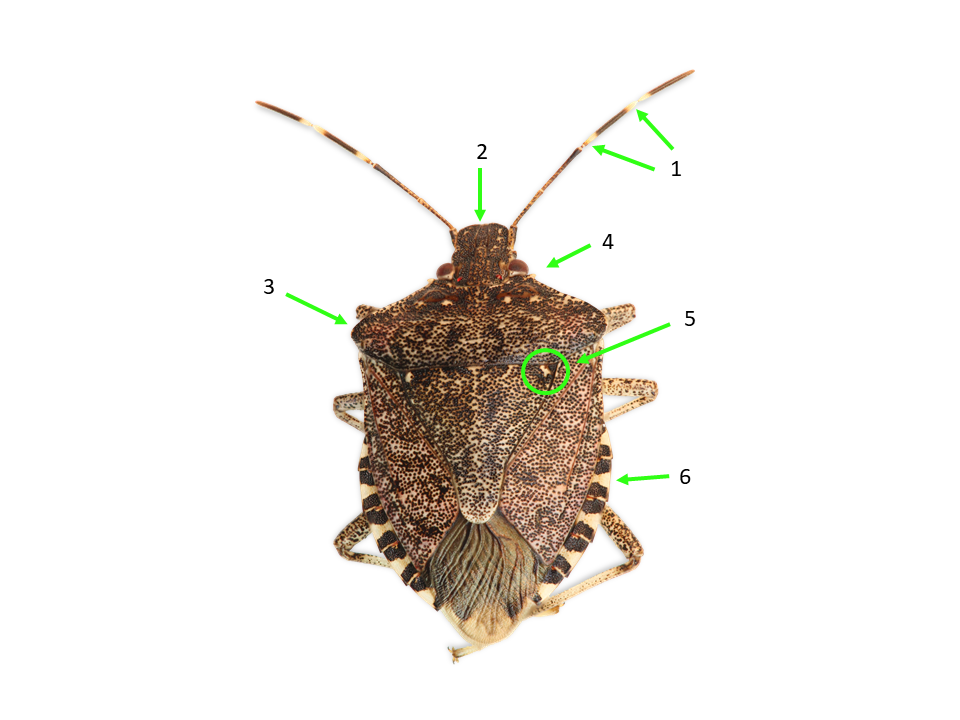Volume 7 Issue 6
Beverly Gerdeman and Charles Coslor
WSU NWREC Mount Vernon Northwestern Washington Research & Extension Center
The Brown Marmorated Stink Bug, BMSB, is a large, heavily armored insect. It is polyphagous, feeding on many different crops. It overwinters in protected places often becoming a nuisance in homes. There are many different species of stink bugs in Washington State. Presented here are a suite of characters which identify BMSB.
- There are 5 antennal segments. The base of segment 5 and tip of 4 are pale.
- The juga and tylus are similar in length.
- The corners of the shoulders are somewhat rounded but not sharply pointed.
- The shoulders are smooth (only a single point beneath each eye).
- A light spot present at each upper corner of the inverted triangle (dorsum).
- Banding along edge of abdomen.
- Iridescent green punctations on head and shoulders (visible in bright light on top and underside).
Immature BMSB
- Eggs are white/light green and laid 20-30 in a mass underside of leaves.
- Nymphs may be present from late April – October
- 1st instar (stage) nymphs are bright orange black.
- Later instar nymphs are spiny (even on the shoulders).
- Light bands on antennae.
Where to find BMSB?
- BMSB adults overwinter in protected places such as houses.
- Favorite host plants include holly and empress tree.
- There are traps and pheromones that simplify finding them.
BMSB Management
- Homeowners – vacuum and toss bugs in soapy water.
- Fill cracks and crevices to prevent BMSB entering homes.
- Growers – properly timed insecticides used to control other pests should reduce BMSB numbers.
- A tiny wasp, Trissolcus japonicus, parasitizes BMSB eggs and has been discovered in Washington State.
- As its numbers increase, BMSB numbers should drop.
BMSB Survey
In 2017 WSU actively surveyed Skagit and Whatcom Counties for presence of BMSB. Fifty-eight adults and 55 nymphs were collected in Skagit County then suddenly, hundreds of adults and nymphs were discovered on 2 October. In Whatcom County fewer than 10 adult BMSB and no nymphs were found in 2017. Established populations are known to be present in BC, Canada which strongly suggests BMSB is established in both Skagit and Whatcom Counties. Surveys will continue in 2018 in Skagit and Whatcom Counties. Homeowners are encouraged to bring suspect insects to their local extension office.



